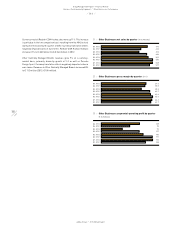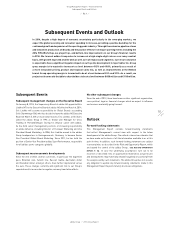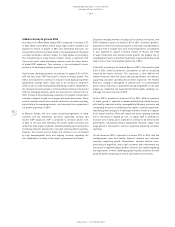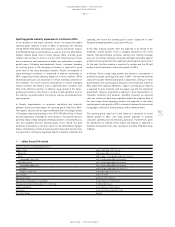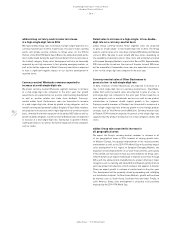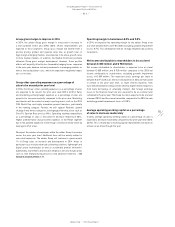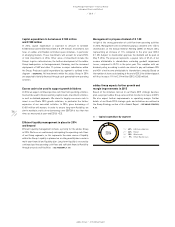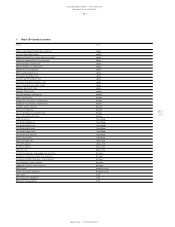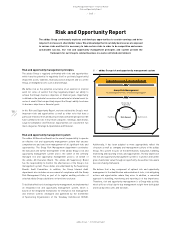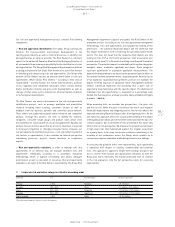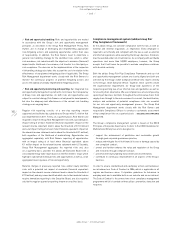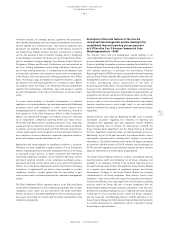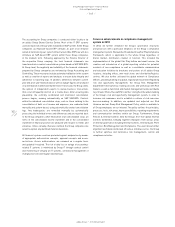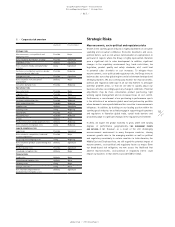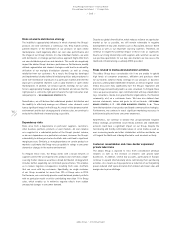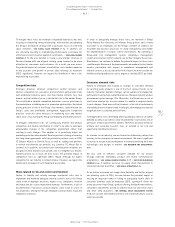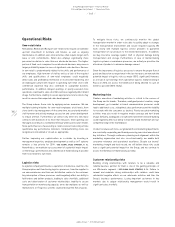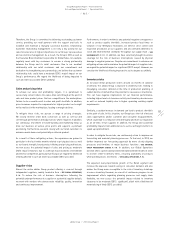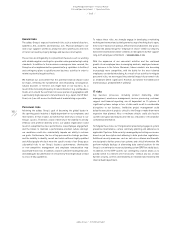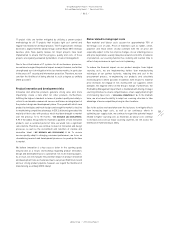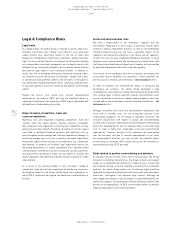Reebok 2013 Annual Report Download - page 164
Download and view the complete annual report
Please find page 164 of the 2013 Reebok annual report below. You can navigate through the pages in the report by either clicking on the pages listed below, or by using the keyword search tool below to find specific information within the annual report.
adidas Group
/
2013 Annual Report
Group Management Report – Financial Review
160
2013
Risk and Opportunity Report
/
03.5
/
/
Risk and opportunity handling: Risks and opportunities are treated
in accordance with the Group’s risk and opportunity management
principles as described in the Group Risk Management Policy. Risk
Owners are in charge of developing and implementing appropriate
risk-mitigating actions and exploiting opportunities within their area
of responsibility. In addition, the Risk Owners need to determine a
general risk handling strategy for the identified risks, which is either
risk avoidance, risk reduction with the objective to minimise (financial)
impact and/or likelihood of occurrence, risk transfer to a third party or
risk acceptance. The decision on the implementation of the respective
risk handling strategy also takes into account the costs in relation to the
effectiveness of any planned mitigating actions if applicable. The Group
Risk Management department works closely with the Risk Owners to
monitor the continuous progress of planned mitigating actions and
assess the viability of already implemented mitigating actions.
/
Risk and opportunity monitoring and reporting: Our integrated risk
and opportunity management system aims to increase the transparency
of Group risks and opportunities. As both risks and opportunities are
subject to constant change, Risk Owners not only monitor developments,
but also the adequacy and effectiveness of the current risk handling
strategy on an ongoing basis.
Regular risk reporting consists of a two-step reporting stream
supported and facilitated by a globally used Group-wide IT solution that
was implemented in 2011. Firstly, on a quarterly basis, Risk Owners are
required to report to Group Risk Management risks with a possible gross
impact rating of at least moderate (financial equivalent: impact on the
relevant income statement metric above the threshold of € 10 million)
and a net impact rating of at least minor (financial equivalent: impact on
the relevant income statement metric above the threshold of € 1 million),
both regardless of the likelihood of materialising. Opportunities are
aggregated separately, with Risk Owners reporting all opportunities
with an impact rating of at least minor (financial equivalent: above
€ 1 million impact on the relevant income statement metric). Secondly,
Group Risk Management aggregates the reported risks and, also
on a quarterly basis, provides the adidas AG Executive Board with a
consolidated Group-wide report based on the Risk Owners’ input, which
highlights substantial individual risks and opportunities as well as, on an
aggregated level, key areas of risk and opportunity.
Material changes in previously reported risks and/or newly identified
risks with a potential net impact of moderate (financial equivalent:
impact on the relevant income statement metric above the threshold of
€ 10 million), and any issues identified which due to their material nature
require immediate reporting to the Executive Board, are also reported
outside the regular quarterly reporting stream on an ad hoc basis.
Compliance management system (adidas Group Fair
Play Compliance Framework)
At the adidas Group, we consider compliance with the law as well as
external and internal regulations as imperative. Every employee is
required to act ethically and compliant with the law as well as external
and internal regulations while executing the Group’s business. Violations
must be avoided under all circumstances. As a company with worldwide
operations and more than 50,000 employees, however, the Group
accepts that it will never be possible to exclude compliance violations
with absolute certainty.
Both the adidas Group Fair Play Compliance Framework and our risk
and opportunity management system are closely aligned and both are
overseen by the Group’s Chief Compliance Officer who reports directly
to the Group’s Chief Executive Officer. Together, these systems create
the organisational requirements for Group-wide awareness of the
respective governing law, of our internal rules and guidelines as well as
for ensuring their observance. We see compliance as all-encompassing,
spanning all business functions throughout the entire value chain, from
supply chain through to the end consumer. As a result, the identification,
analysis and evaluation of potential compliance risks are essential
for our risk and opportunity management process. The Group Risk
Management department works closely with the Risk Owners and
responsible Compliance Officers to conduct a systematic assessment
of key compliance risks on a quarterly basis
/
SEE LEGAL AND COMPLIANCE
RISKS, P. 170.
The Group’s compliance management system is based on the OECD
Principles of Corporate Governance. It refers to the OECD Guidelines for
Multinational Enterprises and is designed to:
/
support the achievement of qualitative and sustainable growth
through good corporate governance practice;
/
reduce and mitigate the risk of financial losses or damage caused by
non-compliant conduct;
/
protect and further enhance the value and reputation of the Group
and its brands through compliant conduct;
/
preserve diversity by fighting harassment and discrimination;
/
contribute to continuous improvement in all aspects of the Group’s
business.
In order to ensure standardised and exemplary actions and behaviour,
we introduced our Code of Conduct in 2006, which is applicable in all
regions and business areas. It stipulates guidelines for behaviour in
everyday work and is available both on our website and on our intranet.
The Code of Conduct is the cornerstone of our compliance management
programme which is founded on three pillars: prevention, detection and
response.


